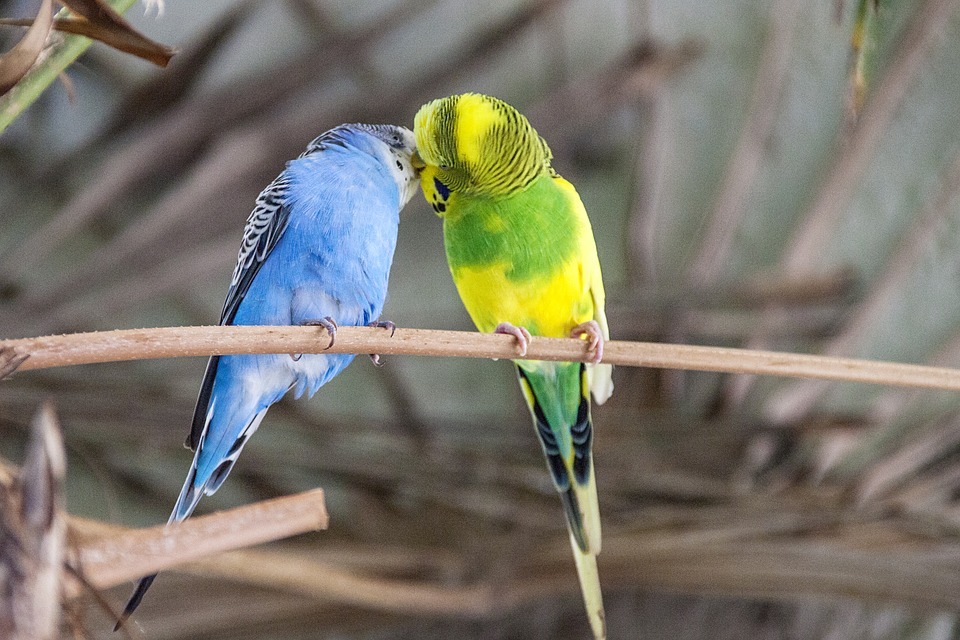The Budgerigar, more commonly referred to as the Budgie or Parakeet (although they are a part of the Parakeet family), is a popular pet bird choice across the world, ranking next to cats and dogs. When showered with proper care and affection, this bird can become extremely friendly, affectionate, and loyal to its owner. The Budgerigar bird is a cute bird that comes in various striking colors. If you want to know more about this beautiful bird, make sure to read further!
History
The Budgerigar was first described in 1805 by English botanist and zoologist George Shaw, and its binomial name was given by English ornithologist John Gould in 1840. The genus name Melopsittacus, from the Ancient Greek language, means “melodious parrot.” Meanwhile, the species name undulatus means “wave-patterned.”
There exists a multitude of nicknames for this bird, including Shell parrot, Warbling Grass parakeet, Canary parrot, Zebra parrot, Scallop parrot, and the Flight bird.
Budgerigars are not the smallest parrot species, but they are small-sized. They may lack in size, but their ability to learn certain words and phrases is more advanced than other parrots. They have the natural flair for talking—you will be surprised that it can speak with greater clarity and broader vocabularies as compared to larger parrot species like Cockatoos and Macaws.
Characteristics of a Budgerigar
Average size: Between 7 and 8 inches
Average life span: Up to 10 years
Not many people know that there are two different types of Budgerigars: the common Budgerigar from Australia and the larger English Budgerigar, which is bred in England specifically for the pet trade. Both are Budgies, but they differ in size and other physical characteristics. English Budgerigars are 1 to 2 inches longer than its Australian counterparts, and they possess bigger heads and puffier feathers around their crowns and faces.
Budgerigars come in vibrant colors, with green/yellow being their only natural color. Other Budgerigars in the pet trade, including white, blue, and other Budgies, are considered color mutations bred exclusively for the pet trade.
As for their behavior, expect them to be very active and playful. They are not as noisy as most parrots, which make them an excellent apartment pet.
Budgerigars can be kept alone, but you should be ready to commit a lot of time interacting and bonding with your pet. Taking good care of a pair of Budgerigars is also great—they will keep each other company when you have less time to spare them. The only downside is that they will be less tame and not mimic speech very well.
Caring for a Budgerigar
Now that you have decided whether to take care of a single or pair of Budgerigars, you must be ready to meet its needs.
Before you buy a pet, keep in mind these signs of a healthy Budgerigar. It should have smooth feathers, upright posture, regular breathing, and emits no sign of discharge around the beak, eyes, or ears. A healthy Budgerigar will regularly clean its feathers, scratching its beak against various surfaces.
As for the cage, you will need to provide your pet bird an adequately-sized cage. Make sure it has enough space for them to spread and flap their wings. For this reason, a rectangular cage is highly recommended.
The cage would need a lining or substrate at its base. A paper will help you monitor all the discharges of your bird. Budgerigars like their homes clean so make sure to get rid of the paper linings weekly or as often as possible.
Provide a bowl of chlorine-free water for your Budgie to bathe in. As active and playful birds, Budgerigars will need numerous toys to get rid of boredom. Include a variety of perches, swings, and other interactive items to stimulate their senses.
As for their diet, Budgies will need a good mixture of nutritional pellets, so ensure to replenish their pellet bowl everyday. Leafy green vegetables and fruits provide them essential nutrients, so make sure to feed them these treats once a week. Cuttlefish is also a great treat to boost your pet’s calcium levels.
Avoid chocolates, lettuce, fruit seeds, and food sources with alcohol and caffeine as these can get your pet very sick. Accessible clean water should always be present. Wash the water bowl as often as necessary.

